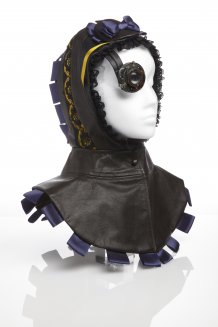Articles

“Aphantasia” is a phenomenon where some people are unable to conjure up pictures in their minds
Art exhibition and first conference of people with no ‘mind’s eye’
The first ever exhibition of paintings and works of art created by artists who have no “mind’s eye” will cast new light on the creative brain when it goes comes to Exeter in March.
It combines with the first ever conference to bring together people at either extreme of the visual imagery spectrum.
Extreme Imagination: Inside the Mind’s Eye will feature works by people who have aphantasia, meaning they cannot visualise, alongside works by those who have particularly vivid mental imagery.
Funded by the Arts and Humanities Research Council, the exhibition will come to Exeter’s Royal Albert Memorial museum and Art Gallery (RAMM) on 30th March. The exhibition is the result of research by Professor Adam Zeman of the University of Exeter Medical School.
In 2015, Professor Zeman coined the term “aphantasia” to describe a phenomenon by which some people are unable to conjure up pictures in their minds. He called the opposite phenomenon “hyperphantasia”, in which people have particularly vivid mental imagery.
Since then, Professor Zeman has received 12,000 emails from people who relate to these descriptions and want to take part in his research. Now, around 100 people from the UK and the US will convene in Exeter for the conference, taking place 5t–7th April.
He said: “It’s really gratifying to have described a phenomenon that has struck a chord with so many people. Many of them have expressed comfort and gratitude in having a definition which has enabled them to tap into a community of people who experience the same variation in experience that they do. We’re looking forward to bringing part of this community together at our first conference on visual imagery which will also explore the latest science.
“The exhibition is also really exciting, as it illustrates both the variations in how our minds work and the fact that this doesn’t place any limitations on our outputs. Regardless of ability to visualise, these artists have produced extraordinary works – I challenge visitors to guess which side of the visual imagery spectrum the artists fall into!”
Among the artists exhibiting their work is Andrew Bracey, who experiences aphantasia. He said: “I found out two years ago that I have aphantasia... It blows my mind that others can see and create in their minds. It made me wonder: maybe that is why I paint? Perhaps why I create images and also why I do not start with the blank canvas, but with an image.”
Isabel Nolan, who also has aphantasia, said: “I never understood those artists who could anticipate exactly how they intended a finished work to come together/to look... I’ve always strongly felt it necessary to make the work in order to discover what it might do, how it will appear. But having nothing to compare it to, it’s difficult to understand how mind-blindness affects my practice.”
Hilllah Nevo, who also has aphantasia, said: “I think that my aphantasia is manifested in my artistic work in the ‘foggy’ nature or in the lack of concreteness of my images. I do not know or cannot visualize how things look, so I try to build them according to what, as far as I can say, are features that do not depend on memory, and these are space and lighting.”
On the opposite side of the spectrum is Claire Dudeney, an artist with hyperphantasia. She said:
I became aware of my hyperphantasia by making a series of works on dreams – realising how vividly I remembered or recreated the scenes, piecing them together from fragments.”
“I'm amazed by how much information the mind picks up subconsciously. Something I’ve seen for a split second can suddenly appear in the curve of a ripped shape or flickering light of a monotype.”
Professor Zeman’s team has completed an analysis of questionnaire data from over two thousand individuals with extreme imagination which will soon be submitted for publication. A pilot study, using neuropsychological and brain imaging approaches in participants with apantasia, hyperphantasia and average imagery vividness was recently completed, and the results will be available later this year.
RAMM is planning a programme of outreach activities around the exhibition. Visit the websites to find out more.
Date: 19 March 2019
